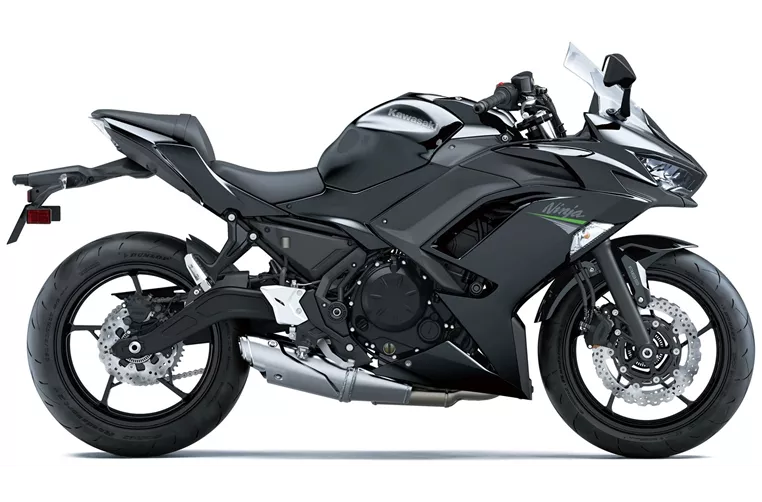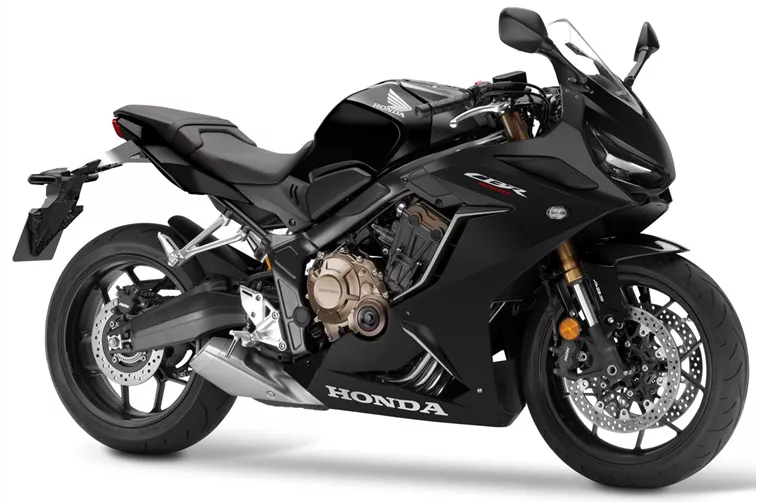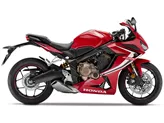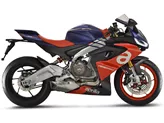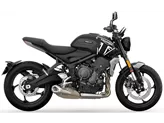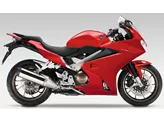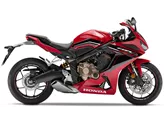Kawasaki Ninja 650 2020 vs. Honda CBR650R 2021
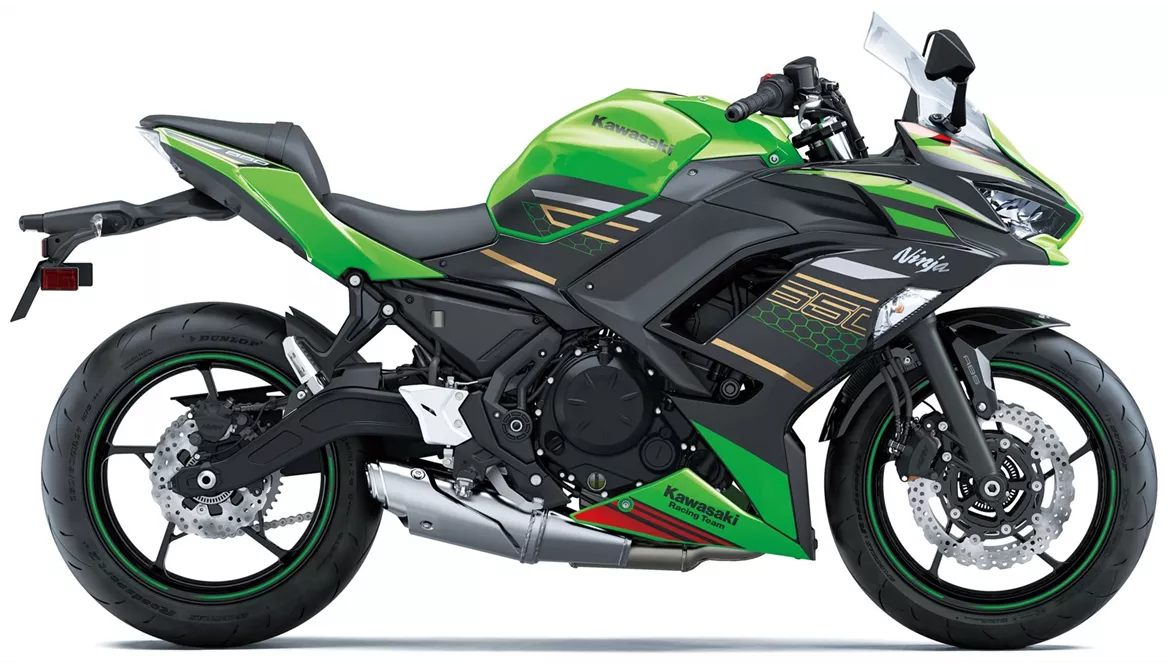
Kawasaki Ninja 650 2020
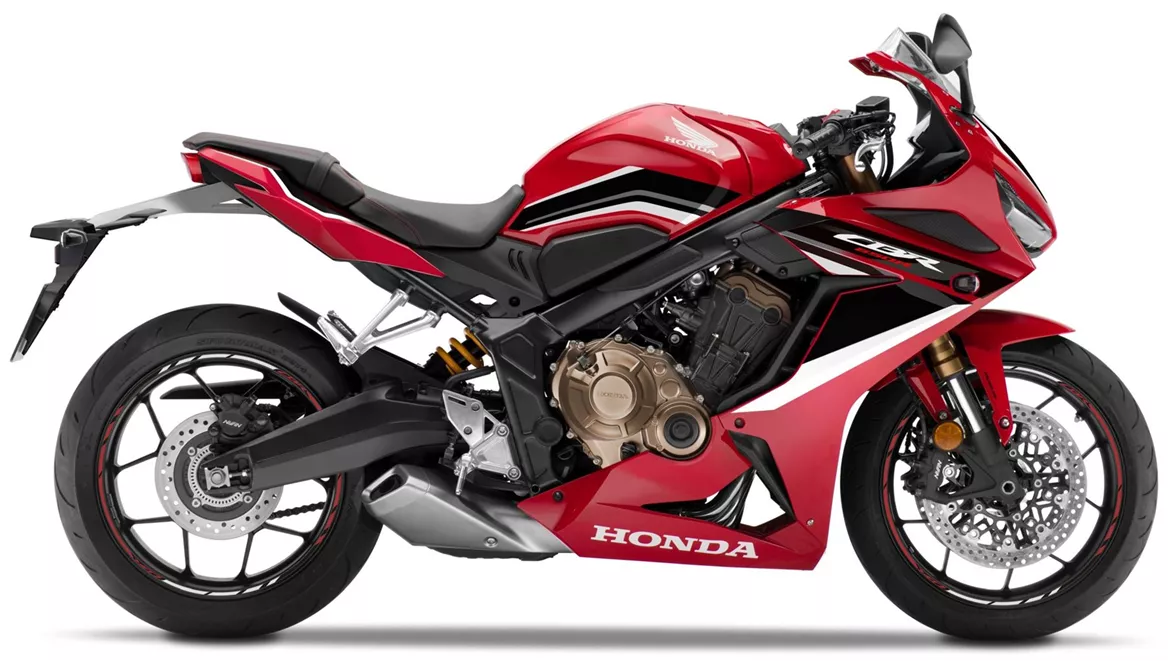
Honda CBR650R 2021
Overview - Kawasaki Ninja 650 2020 vs Honda CBR650R 2021
The Kawasaki Ninja 650 2020 and the Honda CBR650R 2021 are both supersport motorcycles in the 650cc category. While they share some similarities in terms of engine type, displacement, and advanced rider assistance systems such as ABS, they also have distinct differences in their technical specifications and overall performance.
Starting with the engine and drive train, the Kawasaki Ninja 650 2020 features a powerful two-cylinder inline engine with a bore of 83 mm and a stroke of 60 mm. It delivers an engine power of 68.2 HP and a torque of 65.7 Nm. The compression ratio is 10.8, and it has four valves per cylinder with DOHC technology. On the other hand, the Honda CBR650R 2021 is equipped with a resilient four-cylinder inline engine with a bore of 67 mm and a stroke of 46 mm. It offers a higher engine power of 95 HP but slightly lower torque at 63 Nm. The compression ratio is higher at 11.6, and it also has four valves per cylinder with DOHC technology.
In terms of suspension, both motorcycles have a swing arm rear suspension with a monoshock and preload adjustment. However, the Kawasaki Ninja 650 2020 has a telescopic fork front suspension with a diameter of 41 mm, while the Honda CBR650R 2021 features an upside-down telescopic fork with the same diameter. This difference in front suspension design may result in variations in handling and comfort.
Both motorcycles have a steel frame, but the Kawasaki Ninja 650 2020 has a tubular frame type, while the Honda CBR650R 2021 has a twin tube frame type. The rake and trail measurements also differ slightly, with the Kawasaki having a rake of 65.5 degrees and a trail of 100 mm, while the Honda has a rake of 64.5 degrees and a trail of 101 mm. These variations may affect the motorcycles' stability and maneuverability.
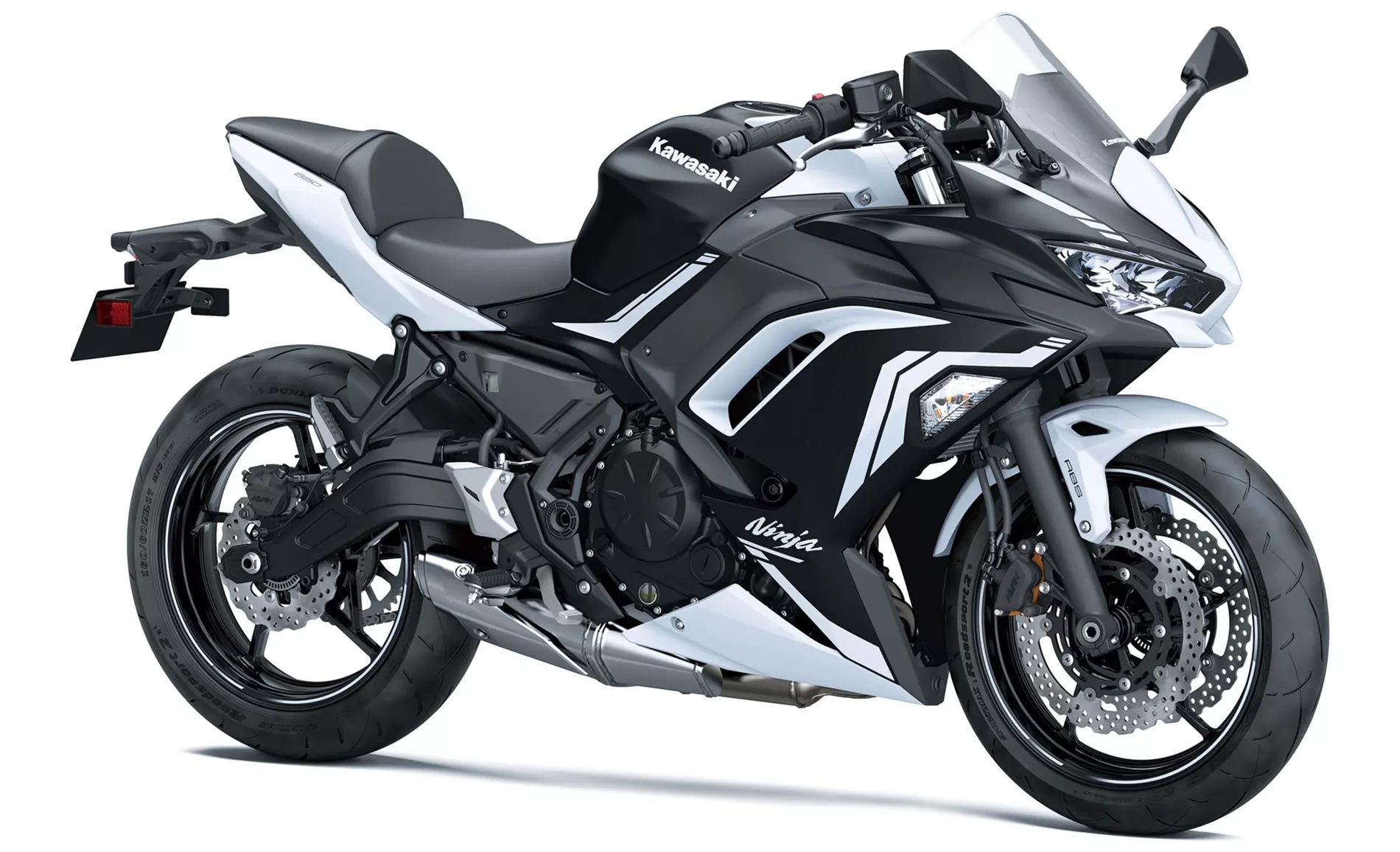
Kawasaki Ninja 650 2020
In terms of braking, both motorcycles have double disk front brakes. However, the Honda CBR650R 2021 has a larger diameter of 310 mm compared to the 300 mm diameter of the Kawasaki Ninja 650 2020. The Honda also features radial brake technology, which may provide better braking performance and control.
In terms of dimensions and weights, both motorcycles have a front tire width of 120 mm and a front tire diameter of 17 inches. However, the Honda CBR650R 2021 has a wider rear tire width of 180 mm compared to the 160 mm width of the Kawasaki Ninja 650 2020. The Honda also has a slightly longer wheelbase of 1450 mm compared to the 1410 mm wheelbase of the Kawasaki. The seat height is higher on the Honda at 810 mm compared to the 790 mm seat height of the Kawasaki. The Honda also weighs slightly more with a kerb weight of 208 kg compared to the 193 kg kerb weight of the Kawasaki. Both motorcycles have a similar fuel tank capacity of around 15 liters.
In terms of strengths, the Kawasaki Ninja 650 2020 is one of the last of its kind, featuring a powerful two-cylinder engine and a comfortable seat suitable for touring. It also has compact dimensions and a beginner-friendly seat height. The stable chassis and TFT display with connectivity add to its appeal, along with its sporty look.

Honda CBR650R 2021
On the other hand, the Honda CBR650R 2021 boasts a resilient four-cylinder engine and a comfortable seating position. The chassis has been improved for 2021, enhancing its overall performance. It also has a cool look and is easy to operate.
However, the Kawasaki Ninja 650 2020 does have some weaknesses. It may be overall too dainty for tall riders, and the front brake pressure point may not be optimal. It also has limited suitability for touring with two people.
Similarly, the Honda CBR650R 2021 has a few weaknesses. The engine may feel sluggish below 8,000 revolutions, and the LC display may appear old-fashioned compared to the TFT display of the Kawasaki.
In conclusion, both the Kawasaki Ninja 650 2020 and the Honda CBR650R 2021 have their strengths and weaknesses. The choice between the two will depend on individual preferences and priorities, such as engine performance, seating position, handling, and overall design.
Technical Specifications Kawasaki Ninja 650 2020 compared to Honda CBR650R 2021
Pros and Cons in comparison
Pros and Cons in comparison
Kawasaki Ninja 650 2020
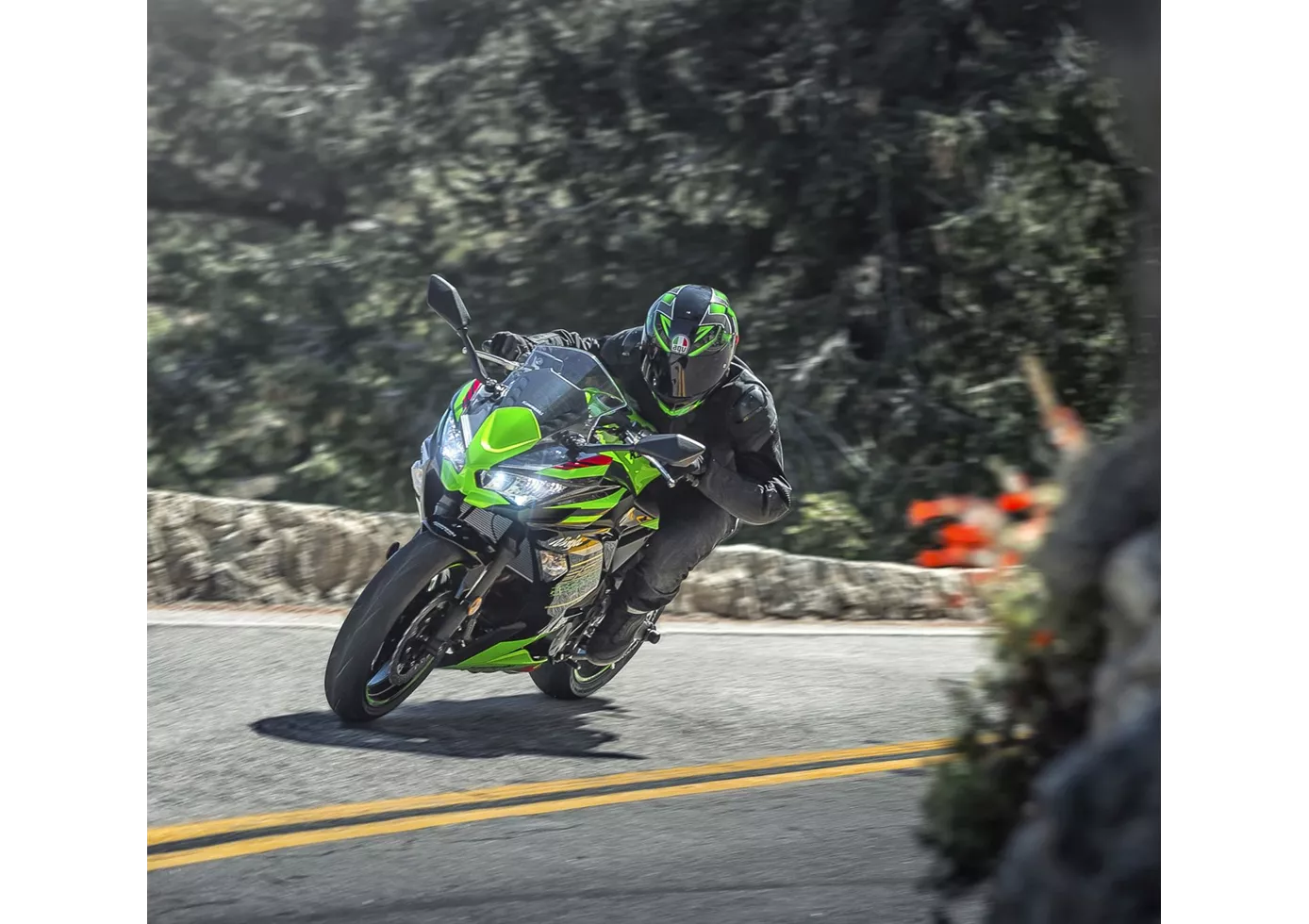
Save the sport tourer! With the Ninja 650, Kawasaki has created an exemplary representative of this class and (hopefully) solved the problem of the new generation. The stable chassis and the decent two-cylinder will delight beginners and advanced riders alike, even at a brisker pace. The front brake is a little too well intentioned, lacking a transparent pressure point despite basically good braking performance. Another plus is the TFT display, which we don't find in the competition at the moment, as well as the grown-up look, which is strongly oriented towards the larger Ninja models.
Honda CBR650R 2021
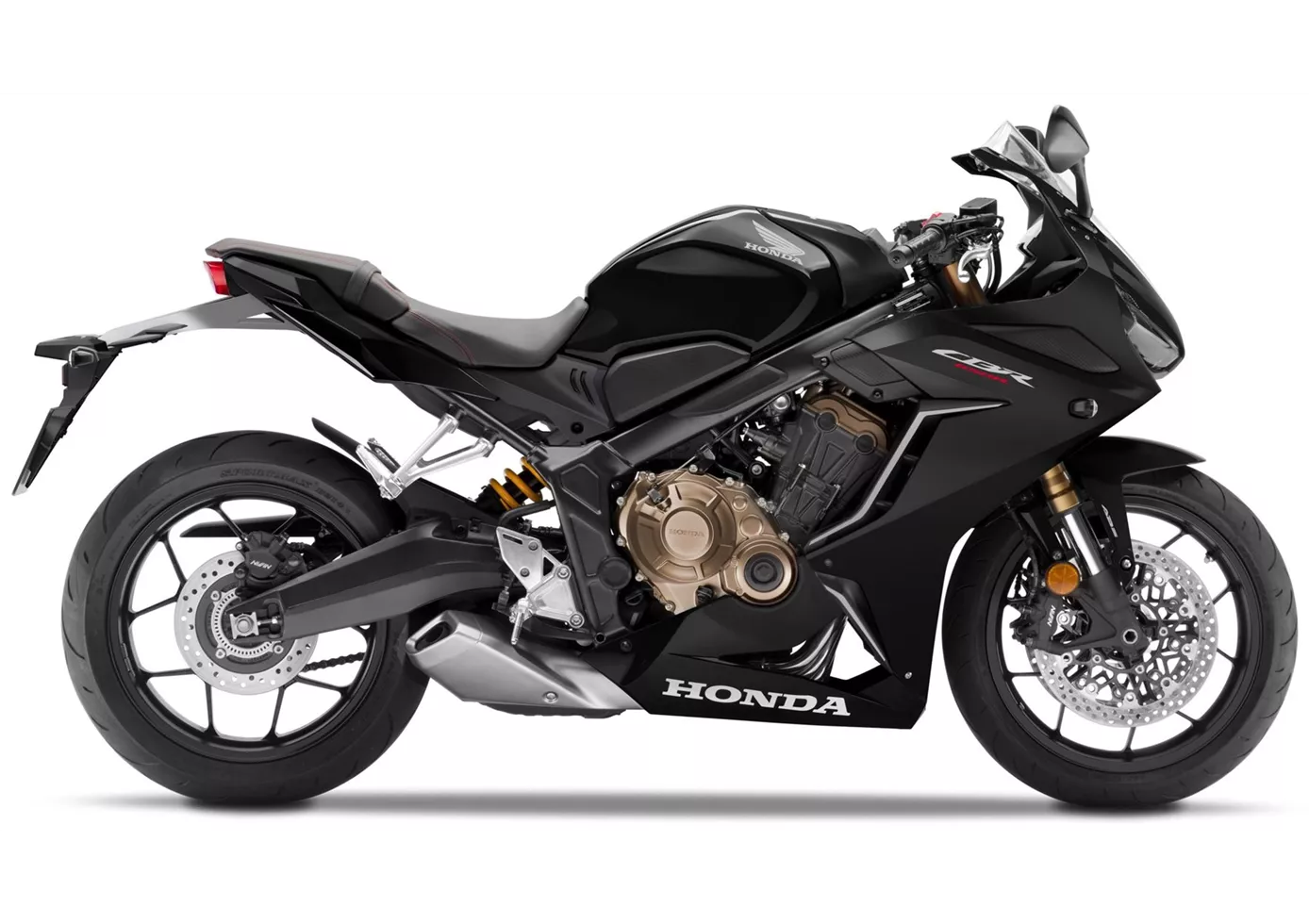
The 2021 update of the Honda CBR650R solves the biggest problem of the previous year's model: the overly comfortable chassis. The new Showa fork gives the sports bike a much sportier response, which is immediately noticeable on winding country roads. However, one should not expect a thoroughbred super sports bike, but a road sports bike suitable for everyday use, on which one can experience a lot of pleasure in the saddle both on the way to work and on a weekend ride.
Price Comparison Avarage Market Price Kawasaki Ninja 650 vs Honda CBR650R
There are a few key differences between a Kawasaki Ninja 650 2020 and a Honda CBR650R 2021. There are the same number of bikes of both models available on the 1000PS.de marketplace, specifically 10. It takes less time to sell a Kawasaki Ninja 650 with 75 days compared to 81 days for a Honda CBR650R. Since model year 2017 1000PS.de editors have written 20 reviews for the Kawasaki Ninja 650 and 14 reviews for the Honda CBR650R since model year 2019. The first review for the Kawasaki Ninja 650 was published on 04/10/2016 and now has more than 79,600 views. This compares to more than 53,700 views for the first review on Honda CBR650R published on 08/10/2018.
